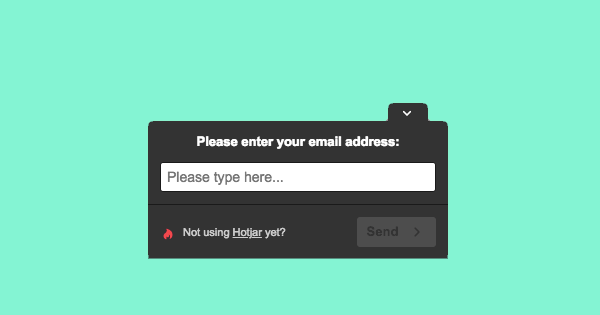It’s Not You, It’s Me: How Usability Testing Can Fix Your Website


These Shoes Weren’t Made For Walking
I am constantly buying new sandals, like at least once every couple of months.
This is not because I feel the need have the latest fashion item, or that I have enough income to casually buy all the shoes a gal desires.
It’s because they are constantly falling apart.
No matter how much I spend, or where I shop for them, without fail, within a month, the front of the shoe starts breaking apart, creating a lovely gaping mouth, meaning I am always tripping over.
I recently spoke to a family member about my frustration with this (because I am a millennial and have nothing better to do than complain about my first-world problems) and they suggested that, “I obviously need to learn how to walk better”.
But to my surprise she actually had the same problem as me. She also wore out her sandals quickly and had the dreaded shoe-mouth problem.
This got me thinking. Maybe it’s not me that is the problem, maybe it’s actually the shoes. Why should I change my (what I would consider) normal walking style, just to suit crappy footwear. That’s right folks, I am blaming something else for the problem. Again, classic millennial behaviour. But this time it’s actually not my fault!
As a UX Designer, I am often telling participants during usability testing sessions that they are not the problem, it’s the product. Yet I still jumped to blaming myself first before thinking about how the product may be causing the issue.
Practice What I Preach
As part of my role, I am often facilitating usability testing of websites and applications, and as part of this I am often confronted by a number of users who blame themselves for not being able to complete a task.
It is not uncommon to hear things such as, “Oh no, it’s just me being stupid” or, “I am sure other people (i.e. other customers) would be able to use it fine” … But wait a goddamn picking minute here. You are the user! You use this product all the time, so why shouldn’t it work for you?
Participants are screened and interviewed before each usability testing session to make sure that they fit the bill of the customer profile, and yet they still think that it’s OK that the product doesn’t work specifically for them.
We even tell participants that it’s not them being tested, it’s the product – and we are constantly reiterating to users that they shouldn’t blame themselves, which often feels like a therapy session involving me making comments like, “Please don’t blame yourself” and the classic, “It’s not you, it’s the product”.
The Blame Game
There are a number of reasons as to why we blame ourselves for issues we have with products, but a guy that really hits the nail on the head is Don Norman in his extremely famous book, The Design of Everyday Things.
He suggests that the idea of humans being the problem is actually taught within society, and is even embedded in our legal system. He uses a great example: when there is a major accident, inquiries are immediately launched to try and understand who is at fault. More often than not the blame is attributed to human error.
Another theory that I came across recently is the aesthetic-usability effect. This theory suggests that if something is pretty and we can’t use it, that we believe that it must be our fault. Especially when combined with customer mental models.
These are created by users based on how they think a product should work, derived from past experience with other products.
Though I hate to use Apple as an example, because, well, it’s 2019 and every Tom, Dick and Harry have used Apple as an example in articles, the iPhone really resonates with me on this one. I love the look and feel of an iPhone; it’s standardised operating system and sleek appearance are undeniable, however looking past the prettiness, things get real ugly. Tasks do not feel intuitive to complete and I often find myself thinking “how do I do that thing again?” and “my memory must be getting really bad!”.
How To Identify User Problems
So, how do I find out what the actual problems are if users won’t tell me?
Obviously this is a deep-routed problem that won’t be solved overnight, and we sadly don’t have a magic wand that will make every user tell us what problems they are having with the products rather than blaming themselves.
However, we do have a couple of suggestions that may help to uncover those pesky issues that slip through the cracks due to self-blame:
Utilise In-Page Surveys
Maybe you have noticed some drop-offs on key pages of your site, or perhaps you want to really understand why people are not converting on your site.
One way you could quickly understand the issues occurring is to provide in-page surveys that are triggered on an action, such as leaving the site, or exit intent.
There are great tools, such as Hotjar, that allow us to capture detailed analytics alongside qualitative data to understand why behaviours are happening. As these can be triggered contextually, and it is not face-to-face feedback, users may be more open about issues they have experienced.
Conduct & Record Your Usability Testing Sessions
Though users may think they are the problem, it is also often possible to understand the problem with the product by watching user behaviour on screen and their facial reactions. For example, users may not say that they cannot navigate to an item and therefore that the site is flawed, but you may view them scrolling up and down the page multiple times or clicking on items randomly.
By recording your sessions and paying attention to those details, you are able to uncover issues without them saying a word.
To quote Ronan Keating, “you say it best, when you say nothing at all”.
Produce High Quality Testing Guides
One fundamental attribute of getting great results from testing is to ensure that you have concrete usability testing guides that provide the user with the confidence to give honest feedback.
These guides should include key things such as an introduction that makes it clear to the participant that they can give both positive and negative feedback about their experience, no matter how brutal, and also reiterate the fact that they are not the ones being tested, it is the design.
Photo source: Hope Aye
So Long, And Thanks For All The Shoes
At Sitback, we put people at the centre of everything we do, and therefore understanding human behaviour is imperative to designing successful products. It’s our prerogative to ensure that our solutions offer the best possible experience.
We aim to truly understand the customer so that we understand how and what issues users have, and how we can help to optimise experiences. If you want to speak to us about conducting usability testing sessions on your website, get in touch! We’d love to hear from you and chat about your project.



